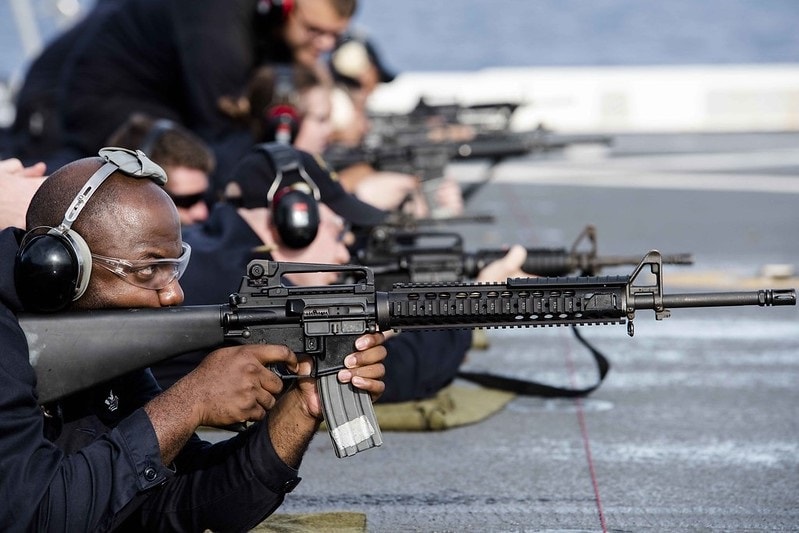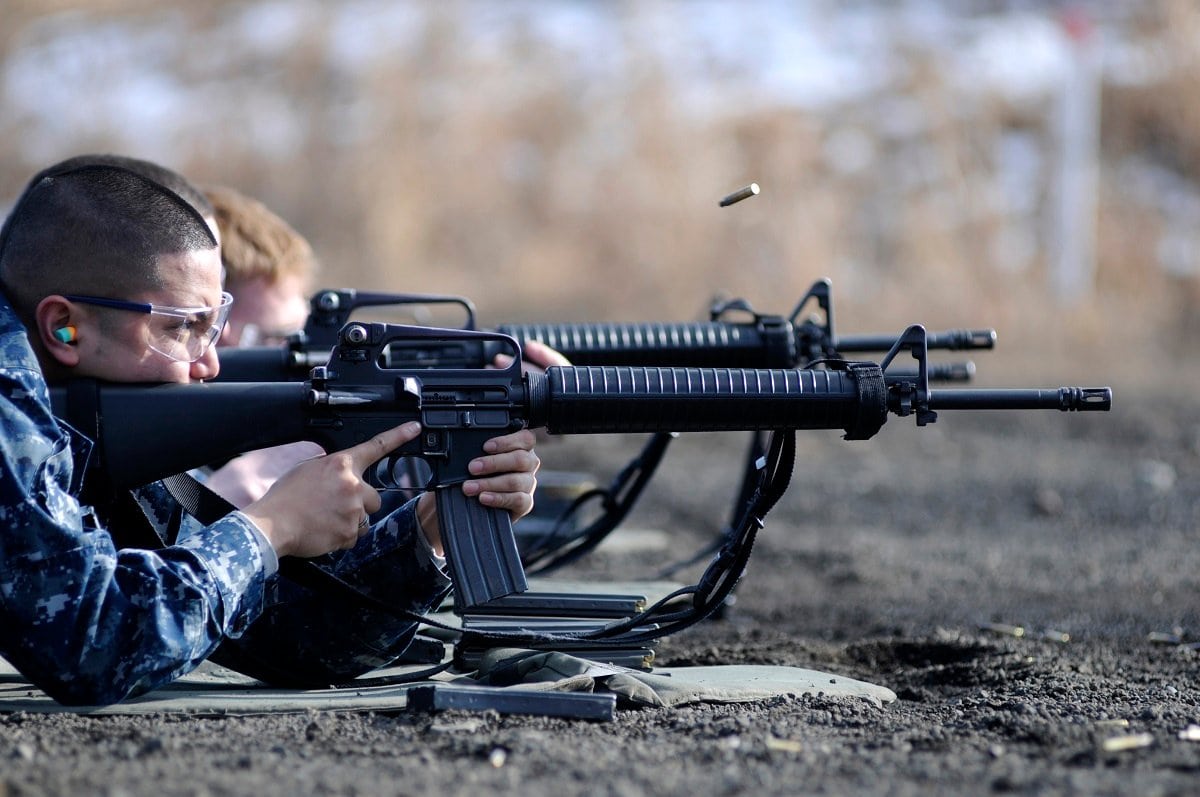In the latter half of the Cold War, there was a longstanding debate whether the Soviet-made AK-47 was superior to the American-made M16. There were plenty of reasons why insurgents around the world preferred the AK-47 – it required less maintenance and could function in the most rugged conditions. However, the M16 was seen as more accurate and had a superior range.
The debate may now be put to rest as the Taliban have been seen swapping out the long-used Kalashnikov AK-47 for captured M16 rifles and M4 carbines that had been discarded by Afghan Army troops. In addition to being more accurate, another factor could be the age of the AKs, which could date back to the Afghan-Soviet War that ended in 1989.
Out with the old and in with the new – and likely never fired, based on how quickly the Afghan military collapsed.
Ammo Supplies Won’t Be a Problem
The news that the Taliban could be equipped with American-made small arms actually coincides with the news that the Biden Administration has placed a ban on the importation of Russian-made small arms and ammunition into the United States. In addition to producing ammunition for Russian-made weapons, such as the AK-47, various Russian companies also produce ammunition that could be used in the M16 and M4s.
“The Russians crank out millions of rounds of AR 5.56 NATO each year for the U.S. market under the brand names of Tula, Wolf, and Red Army just to name a few,” a retired U.S. Marines officer, who asked not to be identified, told Reuters last week. “I suspect the Taliban’s allies will have no trouble supplying parts for just about any infantry system.”
If Russia can’t export the bullets to the U.S. because of the new sanctions, it could potentially look to provide a pipeline of ammunition to Afghanistan, and possibly win favor with the Taliban.
More Than Guns
It is more than just M16s and M4s that the Taliban has added to its arsenal. With its takeover of Afghanistan and capture of vast quantities of U.S.-made equipment that was intended for the Afghan Army, the Taliban have essentially in the course of a month been transformed from an insurgent force into what resembles a modern military – complete with helmets, night-vision goggles, body armor, camouflage uniforms and a fleet of vehicles.
The Taliban have reportedly captured some 2,000 armored vehicles including U.S. Humvees and up to 40 aircraft including UH-60 Black Hawk and scout attack helicopters, as well as ScanEagle military drones.
“We have already seen Taliban fighters armed with US-made weapons they seized from the Afghan forces. This poses a significant threat to the United States and our allies,” Michael McCaul, the top Republican on the US House of Representatives Foreign Affairs Committee, told Reuters in an email.
An estimated $28 billion worth of weaponry was provided by the United States to the Afghan military between 2002 and 2017. Almost all of it is now in the hands of the Taliban.
“The Taliban are set to become the best armed Islamic fundamentalist group in the world when they inherit all the advanced US military equipment of the Afghan Army,” political commentator Adam Schwarz posted to social media, sharing photos of the newly armed and equipped Taliban. “Humvees, M1117 Armored Security Vehicles, International MaxxPros & Navistar 7000 series – paid for by US taxpayers.”

Image Credit: Creative Commons.
Beyond the enhanced capabilities the Taliban now possesses, the capture of the weapons was a major PR coup for the insurgents. Last week, Taliban militants paraded into the Afghan capital of Kabul with their distinctive white flags flying atop the Humvees. As the images of that parade made it around the world, it sent a powerful message – the Taliban successfully drove out the greatest power in the world.
Peter Suciu is a Michigan-based writer who has contributed to more than four dozen magazines, newspapers and websites. He regularly writes about military small arms, and is the author of several books on military headgear including A Gallery of Military Headdress, which is available on Amazon.com.

